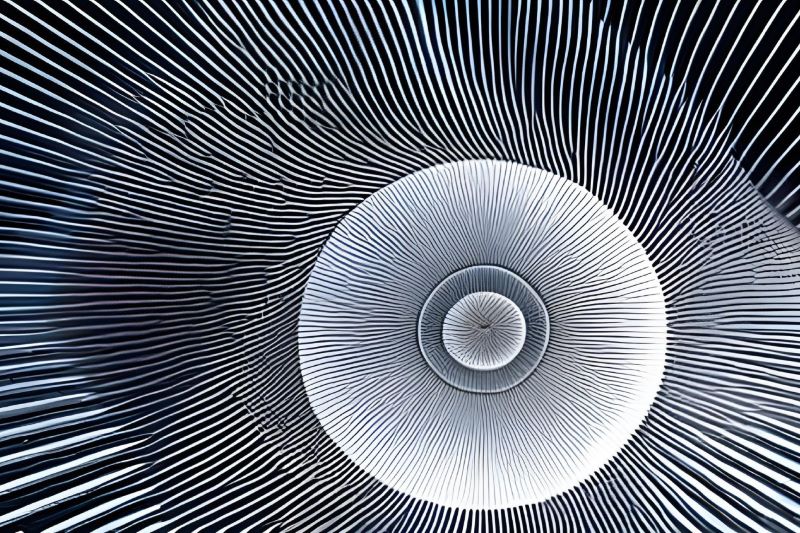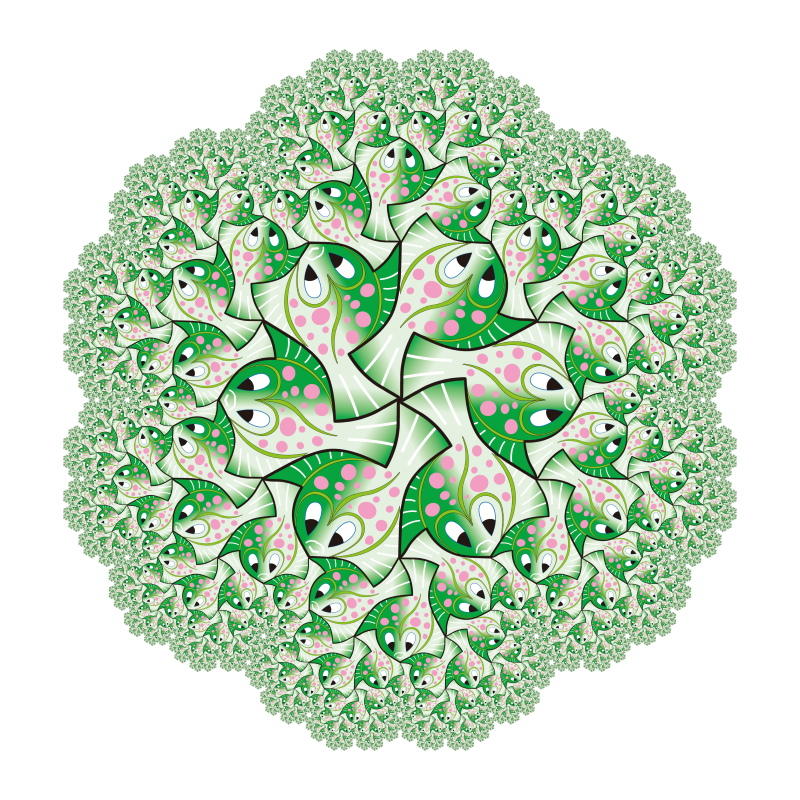IT has broken into the arts, but this does not have to spell the end for artists, painters, and graphic designers. The two fields can be combined, and the results can be fascinating. What interesting things can come out of the union of art and information technology?
Contact
Krzysztof Gdawiec, PhD, DSc, Assoc. Prof., from the Institute of Computer Science of the University of Silesia – krzysztof.gdawiec@us.edu.pl
| Adam Bała |
It is now difficult to imagine the world of art without the presence of elements of information technology. Just as people used to primarily paint with a brush on a canvas or sculpt in stone or wood in the past, nowadays many works are created with a greater or lesser contribution of digital technologies. Krzysztof Gdawiec, PhD, DSc, Associate Professor from the Institute of Computer Science at the Faculty of Science and Technology of the University of Silesia, talks about the union of art and information technology.
Image generated by AI Image Generator
Not only Photoshop
Although the first tools that spring to mind when it comes to creative cooperation between humans and software are Photoshop and Blender (or their various variants), art students are now learning about less obvious applications of information technology. At Stanford University, for example, we can find a subject dedicated to the use of microcontrollers, such as Arduino, to create interactive art installations. Programming is another application of information technology in the arts.
One of the pioneering programming languages designed for artists is the Processing language, first presented at the Massachusetts Institute of Technology (MIT) in 2001. It was created to make it easier for artists to turn their artistic visions into reality through code. It allows them to successfully experiment and visualise their ideas without having to write lengthy code.
VR, AR, and 3D printing in art
AR (Augmented Reality) and VR (Virtual Reality) technologies are now increasingly entering the domain of art. They enable static images to come to life and artists to create works in three-dimensional space, giving the audience a chance to explore and observe their work from different perspectives. The use of 3D printing also opens up new possibilities for artists, who design computer models in this way and print them with confidence that their vision will be given the right form.
Where is the author?
Contemporary art is inseparably linked to the use of AI (Artificial Intelligence). There are systems, such as DeepArt or Dall-E 2, that generate artworks using algorithms and neural networks. Artificial intelligence has become a tool to support artistic creation, enabling artists to explore new forms of expression and inspiring combinations. However, its use in art poses certain challenges, including the problem of authorship. The question of whether the real author of a work is artificial intelligence or a human remains controversial and requires consideration from both legal and ethical perspectives. Researchers and lawyers are working on verification methods to distinguish AI contributions from creative work performed by humans.
Regulations are being developed and, in the case of systems such as ChatGPT, clauses already exist to regulate the use of these technologies in scientific journals. Systems are also being developed to detect whether a particular content or image has been generated by artificial intelligence or is the work of a human. However, this is only the beginning of a long and complex process. The verification systems still require further development.
Van Gogh 2.0
At the beginning of their journeys, artists learn their trade by imitating the style of other artists and gradually develop their own. The same process takes place with artificial intelligence, which learns from the art world’s contributions, present or past. The more relevant data it is provided with, the more original models it manages to generate. Of course, over time, these processes will evolve and AI creativity will start to move from better or worse reproduction of existing styles to creating entirely new works.
Should then artists and representatives of any potentially ‘replicable’ industry already be thinking about expanding or even completely changing their professional competencies? AI specialists reassure us that, despite the increasing contribution of artificial intelligence to the creative process, humans still play an important role and there is little to show that this might change any time soon. It is the human who provides it with the relevant data and parameters.
Picture inspired by the work of Maurits Cornelis Escher | Image generated by Krzysztof Gdawiec
Demoscena
The 1980s saw the emergence of the demoscene, an art form that revolutionised the way in which artistic creation had previously been perceived. This artistic movement, which was close to the subculture of crackers (people who were involved in breaking security features in commercial software), began to use programming to create small programmes that presented animations and other visual effects. The creators associated with this artistic subculture never aimed to commercialise their achievements, and the effects of their work are both demos and final versions of their works.
The works of demoscene members are presented at special events, such as demoparties, where they compete, among other things, in creating the best possible animations and visualisations, while maintaining certain memory limits. This combination of computer art, computer science, and fun is an essential element of the demoscene.
Mathematics and art
Can rational mathematics be reconciled with artistic activity often associated with sensibility? Yes, by all means. The queen of sciences plays an important role in generative art design. There are many mathematical theories and algorithms that prove extremely useful in this context. These include fractals, spherical geometry, hyperbolic geometry, spirals, and other elements of mathematics used to create algorithms that mimic ‘live’ art. Mathematics did not appear in art yesterday — an excellent example of the incorporation of its elements is the works of the 20th-century Dutch painter Maurits Cornelis Escher (1898-1972). Today, mathematics is an integral part of generative art design.
Key to infinity?
The advocates of analogue art may see information technology as an abomination, accusing it of a lack of authenticity and creativity, being devoid of emotion or mass-produced. On the other hand, progressives such as Prof. Krzysztof Gdawiec believe that the combination of mathematics, computer science, and art opens up unlimited creative possibilities for artists. With their work, they prove that the use of augmented reality makes it possible to literally bring works of art to life and thus go beyond the limitations of a static image. The viewer can thus experience works of art in a more interactive, vivid, and profound way.
AR makes it possible to immerse ourselves in a work of art, which fundamentally transforms our experience and guarantees an experience unlike anything we have known before. We are no longer constrained by a flat image or static sculpture; instead, we can explore space and expand our experience. Interactive and dynamic artworks created using AR and VR bring space to life and engage almost all our senses.
Where is the human being?
An artist can now use microcontrollers, such as Arduino or Raspberry Pi, to create interactive installations in which movement, light and sound play equal roles. However, this requires the presence of human factors not yet available to machines, namely imagination and programming skills. These two skills allow them to construct art installations and program microcontrollers in a way that suits their artistic vision and concept.
The article entitled ‘Union of Art and Information Technology’ was published in the No Limits no. 2(8)/2023 popular science journal of the University of Silesia.







